Landowners and residents who live in front of the Auxiliary Dam at Lake Isabella are being swamped by “seepage” coming through the earthen dam that is ruining septic systems, causing sinkholes, clogging the area with weeds and breeding swarms of mosquitoes.
They’ve tried working with the Army Corps of Engineers, which recently rebuilt the Auxiliary and main dams at a cost of nearly $300 million, but say they are getting stonewalled.
Ironically, problematic seepage under the Auxiliary Dam was one of the main reasons for the massive, years-long improvement project that just was completed in October 2022. A key component of that rebuild was to better capture and manage seepage, according to the project’s environmental documents.
But residents and landowners say the seepage has never been this bad, even in big water years.
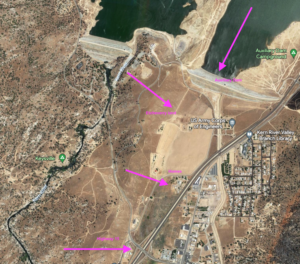
Several residents told SJV Water that the Army Corps acknowledged it simply didn’t prepare for how much water could come through the dam when the lake was at capacity, as it has been this year.
Basically, the Army Corps designed a capture and pump system that is too small by about half, according to what residents have been told.
“They built to the minimum instead of the maximum for leakage,” said Joanie Etcheverry, whose family has owned land at the base of the Auxiliary Dam since before it was built. She has been “hounding” the Army Corps for a solution for several months now and said she’s been branded as “very vocal.”
“What am I supposed to do?” she asked. “The weeds are 12 feet high, the water is eroding the land. Am I supposed to pay to fix all this? I didn’t cause it. You can’t just dump water on someone else’s land and walk away.”
Earlier this summer, she said, the Army Corps gave her a tour of the dam where she learned the agency had installed a cistern to catch the seepage and test it for soil content to monitor erosion under the dam. The system includes pumps and pipes to then move the seepage up over the dam and put it back into the lake.
“It’s very sophisticated,” Etcheverry said.
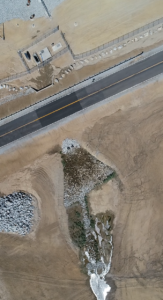
Except, 300 gallons per minute were coming out and the Army Corp’s system was only designed to handle 180 gallons per minute, she said. So the rest was just being pumped onto her land, she said. From there, the water meanders west across several other landowners’ properties, under Barlow Road, through a small collection of homes, under Highway 155 and into two ponds next to the town of Lake Isabella.
About a half- to an acre-foot of water flows out every day.
“When you spend $280 million rebuilding a dam, you’d think you would have been prepared for the maximum,” Ethcheverry said. “This is just…stupid.”
Though SJV Water requested to speak with someone at the Army Corps, the agency would only respond via email and did not provide information in time for follow up questions.
A spokesman wrote that the dam filled faster than its engineers had anticipated and now the Army Corps is “making necessary adjustments based on real-world data.” He stressed that the seepage poses no danger to the structural integrity of the dam.
While the Army Corps has said it’s working on a fix, residents have been asking for solutions since April and nothing has been done so far.
“They should have dug a tailhole on their own land and pumped the water from there,” Etcheverry said. The Army Corps bought about 30 acres at the base of the Auxiliary Dam.
“Every farmer in Bakersfield does that. You take care of your own water,” she said. “You don’t turn it loose on your neighbors.”
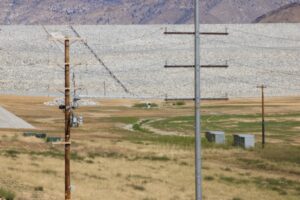
Other landowners Bob Lambert and Gerald Wenstrand, who lives and farms in front of the dam, were frustrated by the Army Corps’ explanation that the lake simply filled too fast with too much water.
“They built this dam to be able to withstand a 1,000-year flood but didn’t put in a proper sized pump to handle the seepage?” Wenstrand said. “It just doesn’t make sense.”
Though the Army Corps has said it is hoping to increase pumping capacity to move more seepage back over the dam, Lambert, a plumbing contractor, said that won’t work.
The whole system, from the cistern to the pipes, is just too small, he said. If you put a bigger pump on pipes that are too small, you’ll just burn out your pump, he said.
“They don’t have a plan,” he said.
Both men and several other neighbors said they were told by the Army Corps that it had recently sought to move the seepage through the old Borel Canal owned by Southern California Edison but the utility said no.
The Borel canal, which comes out of the toe of the Auxiliary Dam, used to feed water into the Borel power station downstream on the Kern River. It was decomissioned several years ago because the dam rebuild project cut off its water source.
A Southern California Edison spokeswoman refused to answer questions about whether the Army Corps had sought use of the Borel canal.
The erosion, weeds and mosquitoes are bad enough, but some residents have far worse problems.
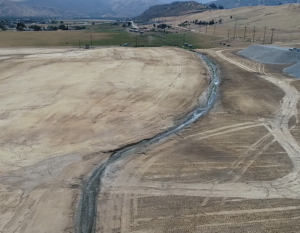
The seepage has created havoc for septic systems among the handful of homes about a mile in front of the dam.
Julie Chapman provided copies of bills showing she has had her septic pumped three times just this year at a cost of $1,500. She’s lived in the home on Perdue Avenue since 1998 and said, up until now, she’s only had to have her septic pumped twice in all those years.
A neighbor on Hatton Avenue, Rhonda Rupert, said seepage and the perennially high water table have been problematic in past years especially in rainy seasons but she’s never seen it this bad.
A sinkhole even opened up behind her house.
“I thought it was a pipe break and called the water company, but it wasn’t that,” she said. “It’s a big hole and when it fills up, the water doesn’t have any place else to go and drains into my back yard. We’ve had to sandbag the back door to keep it out of the house.”
Summer dried things up pretty well, but the sinkhole refilled when Hurricane Hilary blew through in mid-August.
“I’m worried about my foundation,” she said. “Is all this water going to break my house in half?”
Share this:
- Click to share on Facebook (Opens in new window)
- Click to share on Twitter (Opens in new window)
- Click to share on LinkedIn (Opens in new window)
- Click to share on Reddit (Opens in new window)
- Click to share on Tumblr (Opens in new window)
- Click to share on Pinterest (Opens in new window)
- Click to share on Pocket (Opens in new window)
- Click to share on Telegram (Opens in new window)
- Click to share on WhatsApp (Opens in new window)
- Click to print (Opens in new window)
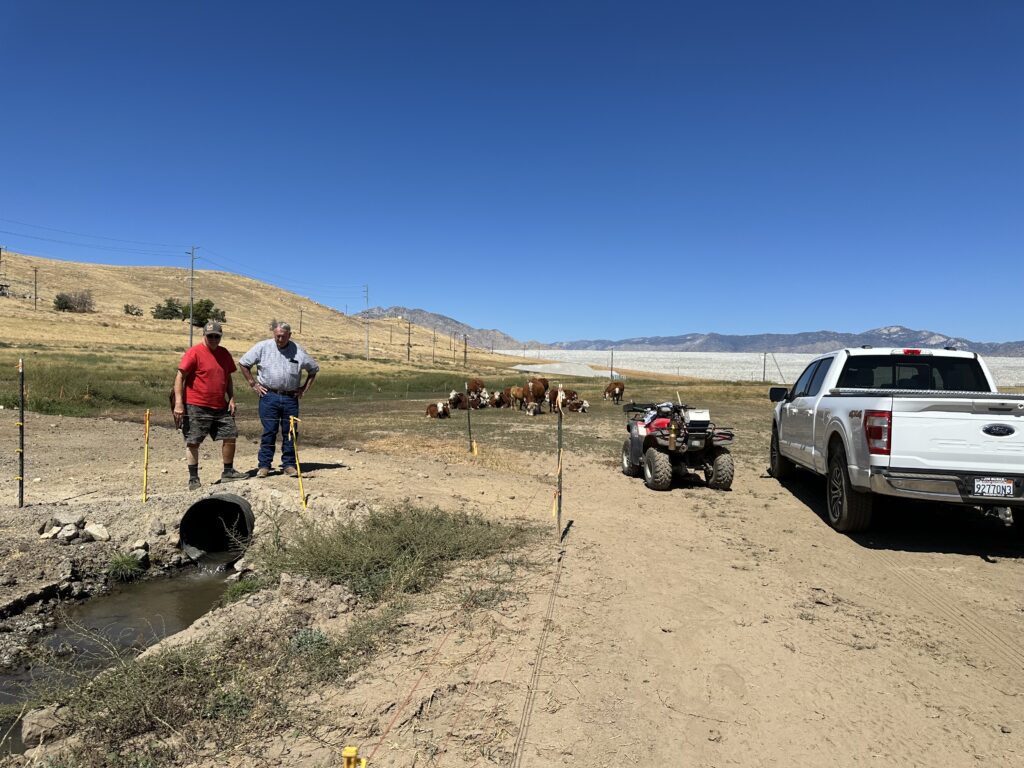







You must be logged in to post a comment.